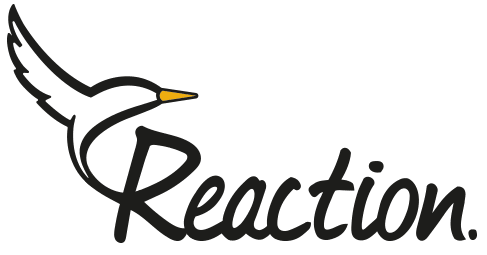What is team building?
Team building is creating an environment where individuals can work together effectively to achieve common goals. It is based on building strong relationships and trust between people that lead them to collaborate effectively. Team building activities might include running team games, fun challenges, holding group discussions, hosting away days, or simply doing things together as a team.
The Purpose of Team Building
The purpose of team building is to motivate your people to work more effectively together towards a common goal, with studies showing that teams can improve productivity by up to 25% compared to individuals doing the same task. Here are a few reasons why team building is important
- Better collaboration: When team members feel connected, trust each other, and can communicate effectively, they are more likely to work together effectively towards common goals. According to research published in the Harvard Business Review (2015), organizations that invest in team-building initiatives see a 15% increase in collaborative efficiency among employees.
- More effective problem-solving: Being able to trust each other and communicate effectively enables people to brainstorm better and collaborate more effectively in problem-solving. A study published in the Journal of Applied Psychology (2017) found that teams that engage in team-building activities improved their problem-solving capabilities by 20% compared to teams that did not participate in such activities.
- Higher morale: Team building provides team members with opportunities for social interaction and stress reduction, as people feel they are on a shared journey with others, which leads to higher morale. According to a Gallup survey (2019), employees who regularly participated in team-building activities experienced a 12% increase in job satisfaction and overall morale.
- Better creativity: When team members feel comfortable sharing their ideas and collaborating without fear of judgment, they are more likely to contribute innovative solutions. A study published in the Journal of Business Research (2016) found that teams engaging in regular team-building activities demonstrated a 15% increase in creative output compared to those that did not.
- Improved retention: Team building promotes a strong culture and a sense of belonging that makes team members feel like they are part of a supportive environment, which ultimately encourages them to stick with their team for longer. Research by the Society for Human Resource Management (SHRM) (2018) indicates that companies with strong team-building initiatives experience a 22% higher employee retention rate compared to those that don’t prioritize such activities.
Two Types of Team Building
There are two main types of team-building activities:
- Virtual team building activities are activities that do not require team members to be in the same physical space. For example, remote working teams can participate in virtual team building even if their members are spread around the globe. These activities include online games, wellness challenges, score prediction games, virtual coffee breaks, and more.
- In-person team building activities are those that require team members to be in the same physical space. These activities are ideal for companies where people work in the same location and offer a valuable face-to-face experience. Examples include team dinners, group walks, shared lunch breaks, and fun games.
What is the first rule of team building?
To lead a team effectively, you must first establish your leadership with each team member and set clear personal and collaborative goals. As a team leader, you need to make sure everyone understands their role in the team, the common objective, and how they can contribute to achieving that objective.
Is team building a skill?
Yes, team building is a skill, particularly for team leaders. It involves the ability to form interactive, supportive, and high-performing teams. While some people may have a natural aptitude for team building, the skill can be developed with training and experience. To develop this skill, team leaders need to understand their strengths and weaknesses in team building and consistently learn and practice new aspects of this essential leadership competency.
Can a team have more than one leader?
Yes, a successful team can have more than one leader. This approach is called shared leadership or distributed leadership and can be effective in certain situations. While having multiple leaders for a team can increase the diversity of perspectives and enhance adaptability, it can also create challenges in establishing a clear direction. To effectively manage multiple leaders, team members must have a clear understanding of each leader’s role and responsibilities. This helps to avoid confusion and ensures that the team remains focused on achieving its goals.
What are the 5 stages of team building?
Team building includes five main stages:
- Forming: The initial phase when a team is first created, whether it’s a new team or an existing team with a new leader. During this stage, the leader communicates the team’s goals, objectives, and the specific roles and responsibilities of each team member. The duration of this stage can vary depending on the team’s background and dynamics.
It’s recommended that the team leader meet with the entire team collectively, as well as individually with each member. This allows for a clear understanding of each person’s contributions and how they fit into the overall team dynamic.
Storming: a stage that is characterized by the emergence of conflicts and disagreements as team members begin to work together. This is natural when individuals with different skills, personalities, and opinions start collaborating. During this stage, team members may test boundaries and challenge each other’s ideas, revealing potential conflicts or differences within the team.
- Norming: This is a stage that occurs after initial conflicts are resolved. The team begins to establish norms and expectations for collaboration and conflict resolution. The team leader plays a crucial role in creating effective problem-solving processes while maintaining the team’s overall strength. During this stage, the team’s cohesion begins to increase, leading to improved collaboration and a stronger sense of belonging.
- Performing: A stage that happens when the team operates at its peak efficiency. Team members are familiar with each other’s strengths and weaknesses, communicating clearly and effectively. This leads to improved overall performance and a much faster pace of task completion. To maintain momentum and celebrate success, it’s important to recognize and acknowledge team achievements at key milestones and reward team members.
- Adjourning: This stage happens when the team’s initial goal is completed or when team members move on to other projects. A great team leader can help team members develop during this stage, preparing them for future leadership roles or new challenges. It’s highly important to celebrate the team’s achievement before moving on to the next project as this helps team members build their confidence toward the next challenges and achievements.
What is essential for team building?
Encouraging all team members to contribute their ideas and participate in open discussions is crucial for effective team building. When people feel comfortable sharing their thoughts and engaging in meaningful conversations, they develop confidence in their ability to contribute to the team’s success. This sense of belonging motivates team members to work towards the team’s goals.
Additionally, setting clear goals and expectations for both the team and individual members is essential. Building trust and respect early on, and ensuring that everyone feels recognized and appreciated for their efforts, further strengthens team cohesion and productivity.
What are the 5 keys to a successful team?
While there are a few strategies for building a successful team, there are five key components that are particularly important. These components are the foundations for a positive, productive, and collaborative work environment:
- Psychological Safety: The environment where members feel comfortable expressing their thoughts and opinions without fear of judgment or punishment. It fosters a sense of trust and encourages open communication.
- Dependability: Reliable team members who consistently follow through on their commitments are essential for building trust and ensuring that work gets done.
- Structure & Clarity: Clear roles, responsibilities, and expectations provide a sense of direction and help to avoid misunderstandings and conflicts.
- Meaning of Work: When team members feel that their work is meaningful and contributes to something larger than themselves, they are more motivated and engaged.
- Impact of Work: Knowing that their work has a positive impact can boost morale and satisfaction among team members.
Examples of Team Building Activities
Icebreaker Activities
- Two Truths and a Lie: Each team member shares three statements about themselves, two of which are true and one is false. The other team members try to guess which statement is the lie.
- Human Knot: Team members stand in a circle and hold hands with two different people. The goal is to untangle the knot without letting go of anyone’s hands.
- Charades: Team members act out a word or phrase while the rest of the team tries to guess what it is.
Team-Building Games
Score Prediction game: Select an event like the Olympics, the Oscars, or any other event. Team members need to guess the outcome or score of the event and earn points based on the accuracy of their guesses, placing them on a leaderboard.
Scavenger Hunt: Teams are given a list of items to find within a specific time limit.
Photo Challenge: Teams receive a daily prompt (for example, “something that makes you happy”) and need to respond by posting a picture in a company channel. Other team members can comment on the picture, and the person who took it earns 2 points for every comment.
These involve outdoor activities, step challenge, healthy competitions, fitness activities, yoga, or a wellness seminar/workshop. Spending time together doing something different from work and meeting deadlines improves relationships among team members.
• Communication and Joint Activities:
These include activities like photo challenge, sharing individual stories, or telling an appreciation circle where each person says appreciative words to another employee. This activity allows the team to learn more about each other and relieve some stress. Also hearing appreciative words from co-workers encourages the team members to work harder.
• Creative and Festive Activities:
During special occasions, you can plan a group activity that will give your employees something to look forward to. This can be with board games, karaoke, dance, etc. On festive days, the team could play dress up. This will lighten the mood at the office allowing it to have a hospitable atmosphere.
•Community Event:
Team building is not limited to only fun and games. The team can also volunteer together. This is a good activity that is also cost-effective.
• Sharing a Meal:
Something as simple as a company dinner can lift so much burden and relieve stress. Sharing a meal is a common but effective way to build connections with team members. It can be a way to celebrate after successfully finishing a task, a birthday dinner to celebrate a team member, or even a welcome party.
Team building activities can be anything as far as they match the goals and values of the company. The purpose is to have the employees relax and build a stronger bond.
3 Basic Techniques for Team Building
• Skills-based Technique
This technique is among the basic ones because it focuses on the skill of the employee. The aim is for workers to cultivate these skills in their daily routines thereby improving their knowledge which leads to an overall increase in the company’s growth.
• Activity-based Technique
This includes activities outside the normal work schedule. With this, employees are motivated to leave their comfort zone and engage in group activities which increases their productivity. These activities can be mental, physical, or both.
• Value-based Technique
This is generally the coming together of employees to work towards a charitable or community goal. This technique is beneficial to both the organization and employees. It allows them to contribute meaningfully to society and also gain some achievement while at it.
According to a survey conducted by Gallup, organizations with rewards and recognition programs that highlight teamwork see a 29% increase in employee engagement, and teams that feel appreciated are more likely to be motivated and productive. Here’s why rewarding teamwork is so important:
Operant Conditioning: According to B.F. Skinner’s theory of operant conditioning, behaviors that are followed by positive outcomes, or rewards, are more likely to be repeated. When teamwork is rewarded, employees are psychologically conditioned to view collaboration as a behavior that leads to positive results, thereby increasing their motivation to engage in team activities.
Maslow’s Hierarchy of Needs: Abraham Maslow identified esteem as a fundamental human need. Recognition and rewards address this need by providing individuals with a sense of accomplishment and respect from others. When team efforts are acknowledged, it satisfies employees’ psychological need for recognition, boosting their self-esteem and encouraging continued collaboration.
Neuropsychology of Rewards: The brain’s reward system, particularly the release of dopamine, plays a significant role in how we respond to rewards. Dopamine is associated with feelings of pleasure and satisfaction, and its release reinforces the behaviors that lead to the reward. In the context of teamwork, receiving a reward triggers a dopamine response, making employees more likely to repeat collaborative behaviors in the future.
Social Learning Theory: Albert Bandura’s Social Learning Theory suggests that people learn behaviors by observing and imitating others, especially when those behaviors are rewarded. When teamwork is consistently rewarded within an organization, it reinforces a culture of collaboration.
The 5 C’s of Team Building
Teamwork is crucial to any organization looking to achieve success. Now, to build this stronghold, you must focus on the five C’s of teamwork
1. Communication
This is the first step. To build strong teamwork, members must be able to effectively pass across their message. The ability to communicate effectively helps prevent misunderstanding, mitigates conflicts, and improves decision-making.
2. Commitment
Another important point of focus is the commitment placed on the team-building activity. This is the amount of dedication put into achieving a common goal. With this, overcoming obstacles and challenges becomes an easy shell to crack.
3. Confidence
Believing in oneself should be a given as nothing is possible when self-confidence has been thrown off the bus. A team that is equipped with a high level of confidence takes more risks, adapts to unforeseen changes, and comes out unscathed.
4. Coach-ability
This is shown by members towards gaining more knowledge, improving, and adapting. It is believed that no one is above learning and new things can be incorporated so keeping an open mind is necessary.
5. Camaraderie
This is the growth of friendship and oneness that develops among team members. A team built based on strong foundation is more likely to be productive, resilient, and effective.
When planning team-building activities, it’s important to create a budget that ensures your activities are both effective and affordable. This will also enable you to measure ROI (return on investment) and make improvements for the next time. Here’s a step-by-step guide to creating a team-building budget:
Create Quantifiable Objectives: For example, consider how many people you expect to join, or what the activity satisfaction rate should be at the end. Think about what success looks like for you and make it measurable.
Assess Your Resources: What’s your overall budget? Do you have any in-house resources? For instance, a restaurant business can schedule a team-building picnic and use restaurant food, which will save resources. Knowing how much you have to start with will help you plan effectively.
Brainstorm Ideas: Focus on activities you’d enjoy doing. Many team leaders create team-building activities they would be embarrassed to participate in, thinking other team members might like them. The best way to assess an activity is to consider whether you would enjoy it yourself. You can also ask team members for ideas or suggestions. Write down your three favorite ideas.
Research Costs: For each activity, list all the costs required to make it successful. Consider the entire journey of the activity—from inviting employees to register to sharing a post-activity recap. You don’t need exact price quotes at this stage—ballpark figures will suffice.
Make a Choice: Look at the three activities and ask yourself which one would provide the best return on investment. Which one would have a greater effect on company morale and offer a great opportunity for team members to get to know each other? Select one activity.
Create a Budget Worksheet: For your selected activity, outline all expenses and start working out the details. Make sure you cover all the stages involved in creating the team-building activity.
Share It with Your Management: Start with the end results you’re aiming to achieve, then go over the quantifiable objectives and the final costs. If questions are asked, you can dive into the details or share the spreadsheet with all the information.
Track Actual Costs: As you run the activity, add a column in the budget labeled “Actual” and compare your plan to the actual costs. In some cases, you may find yourself with more or fewer expenses than planned. Tracking this will help you improve for the next time.
Creating a team-building activity correctly will enable you to stay on track with your investment and measure the effectiveness of the activities.
Stakeholder buy-in is the cornerstone of successful team building initiatives. Their influence extends beyond mere approval; stakeholders hold the purse strings, controlling budgets and resource allocation that can make or break your plans. Engaging them early ensures their support translates into the necessary funding and scheduling flexibility, paving the way for a well-organized and well-attended event.
Beyond logistics, stakeholder involvement fosters a deeper cultural shift. When key figures champion team building, it becomes ingrained in the company’s DNA, viewed as a valuable investment rather than a frivolous expense. This long-term commitment to team development cultivates a collaborative environment where employees feel valued and empowered to thrive.
Conclusion
Team building can make or break a business. Motivating your team to connect, improving communication between team members, and building trust will transform your team dynamics and the way your business performs. A study by Gallup found that highly engaged teams show 21% greater profitability, and companies with engaged employees outperform those without by 202% (!) in terms of financial performance.
Remember that team building takes time and consistency. You cannot expect your team to work perfectly together after just one event, to create a successful team you need to adopt a long-term approach and continuously show your team that you care about them.






